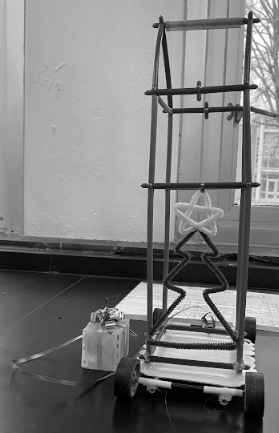Anatomy classes dissect cats
Student gain raw experience
Starting the week before winter break, the students of Mr. Tim Dougherty’s Anatomy classes had the puurrrrfect chance to have hands on experience in the art of dissection.
Dougherty has been teaching Anatomy and Physiology and performing cat dissections at North Harford for 6 consecutive years. This year, there are four classes that are required to perform dissections this year.
Senior Carly Whittington and Nicole Lagtis have the opportunity to dissect cats this year. In order to prepare for the dissections, they learned about the muscle system and skeletal systems. Dougherty would discuss with the class what they would be doing with the cats and the specific body parts at which they would be looking.
According to Lagtis they dissect cats rather than other animals because their anatomy is similar to that of humans.
The cat dissections take much longer than one day, sometimes students will do more than one dissection in a week.
“We have done one out of eleven dissections so far. We spread the dissections out throughout the year, it takes a whole class period to do one dissection,” said Lagtis.
During each dissection day they will focus on a different part of the cat’s body. The classes will always have a focus on something different.
“It depends on the system (we are studying). If it is the heart we take it out and explore how the blood flows through the different chambers to the lungs and back out through the aorta to the rest of the body. If we are examining a kidney or adrenal gland we may just take it out and see how it fits into a larger system,” said Dougherty.
Once a dissection day has come to a close the classes will compare and contrast how a specific organ or system differs in cats versus humans.
Lagtis said the most interesting part so far of the dissection was seeing what the heart actually looked like compared to a stereotypical heartf.
“The brain dissection is usually the most popular. Very few people have actually seen a brain before and to realize that we all have this amazing organ that does so much but that we never get to see certainly opens the mind (so to speak),” said Dougherty
Whittington said that the cats are rock solid, but you can still see the organs and muscles clearly. The veins were also found with ease considering they were bright blue.
Compared to Lagits who wouldn’t mind dissecting a cat again, Whittington was mostly disgusted.
“It was so gross and sad. The cat’s mouths were open and their tongues were sticking out, some even had flies on them,” said Whittington.
Dougherty remembered a time in the past where a certain student wasn’t very lucky on their dissection day.
“Once removing a cat brain a student accidentally had some juice squirt out onto another student’s face,” said Dougherty, “Many students are squeemish about cat dissections at first but nearly all eventually jump right in and enjoy it greatly.”












